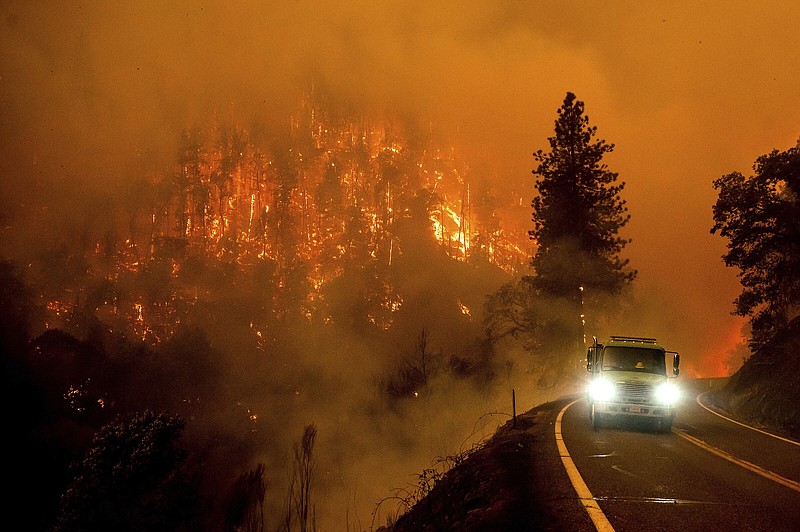YREKA, Calif. -- Crews battling the largest wildfire so far this year in California braced for thunderstorms and hot, windy conditions that created the potential for additional fire growth Sunday as they sought to protect remote communities.
The McKinney Fire was burning out of control in Northern California's Klamath National Forest, with expected thunderstorms a big concern Sunday just south of the Oregon state line, said U.S. Forest Service spokesperson Adrienne Freeman.
"The fuel beds are so dry and they can just erupt from that lightning," Freeman said. "These thunder cells come with gusty, erratic winds that can blow fire in every direction."
The blaze exploded in size to more than 80 square miles just two days after breaking out in a largely unpopulated area of Siskiyou County, according to a Sunday incident report. The cause was under investigation.
The blaze torched trees along California Highway 96, and the scorched remains of a pickup sat in a lane of the highway. Thick smoke covered the area and flames burned through hillsides in sight of homes.
A second, smaller fire just to the west that was sparked by lightning Saturday threatened the tiny town of Seiad, Freeman said. About 400 structures were under threat from the two California fires. Authorities have not confirmed the extent of the damage yet, saying assessments would begin when it was safe to reach the area.
A third fire, which was on the southwest end of the McKinney blaze, prompted evacuation orders for around 500 homes Sunday, said Courtney Kreider, a spokesperson with the Siskiyou County Sheriff's Office. The office said crews had been on the scene of the fire since late Saturday but that the fire Sunday morning "became active and escaped its containment line."
Several people in the sheriff's office have been affected by evacuation orders because of the fires "and they're still showing up to work so, (it's a) very dedicated crew," she said. A deputy lost his childhood home to fire on Friday, she said.
In northwest Montana, a fire sparked in grasslands near the town of Elmo had grown to about 17 square miles after advancing into forest. Crews were working along edges of the fire Sunday, and aircraft were expected to continue to make water and retardant drops to help slow the fire's advance, said Sara Rouse, a spokesperson with the interagency team assigned to the fire. High temperatures and erratic winds were expected, she said.
In Idaho, the Moose Fire in the Salmon-Challis National Forest has burned more than 75 square miles in timbered land near the town of Salmon. It was 21% contained by Sunday morning. Pila Malolo, planning operations section chief on the fire, said in a Facebook video update that hot, dry conditions were expected to persist Sunday. Officials said they expected fire growth in steep, rugged country on the fire's south side.
In Hawaii, the Maui County Emergency Management Agency said a brush fire was 90% contained but a red flag warning was in effect for much of Sunday.
And in north Texas, firefighters continued in their efforts to contain the 2-week-old, 10 1/2-square-mile Chalk Mountain Fire. The crews now report 83% containment of the fire that has destroyed 16 homes and damaged five others about 50 miles southwest of Fort Worth. No injuries have been reported.
Information for this article was contributed by Becky Bohrer, Christopher Weber, Sam Metz and Terry Wallace of The Associated Press.

